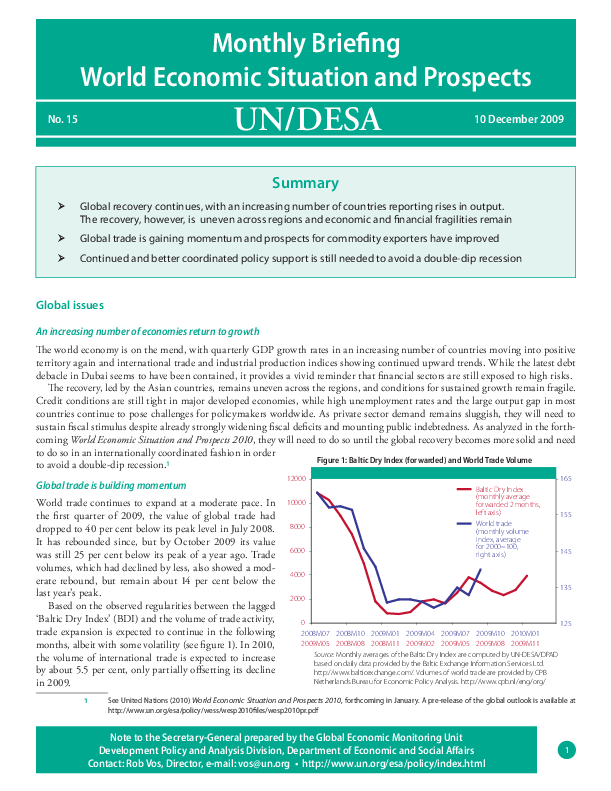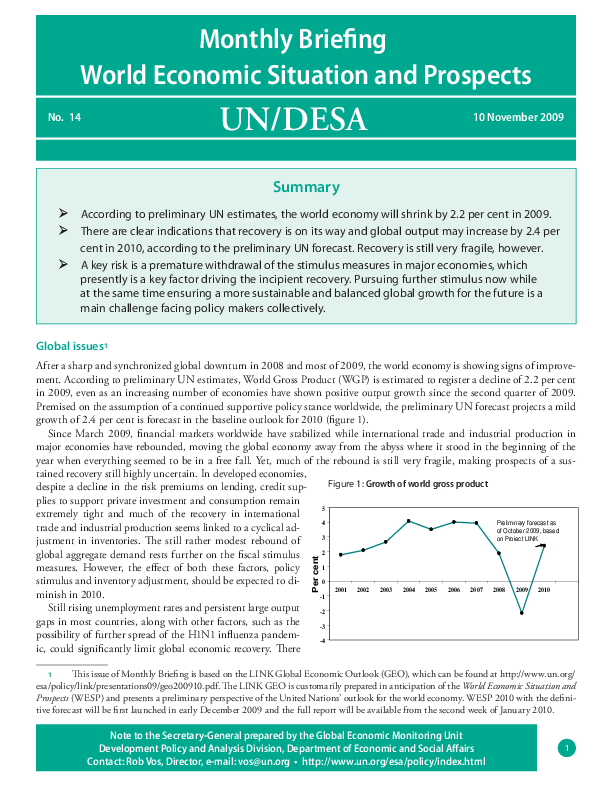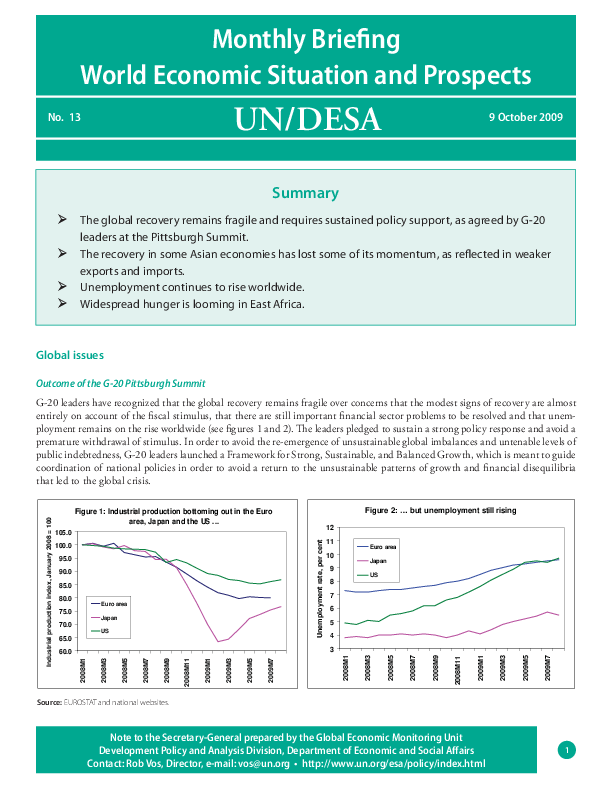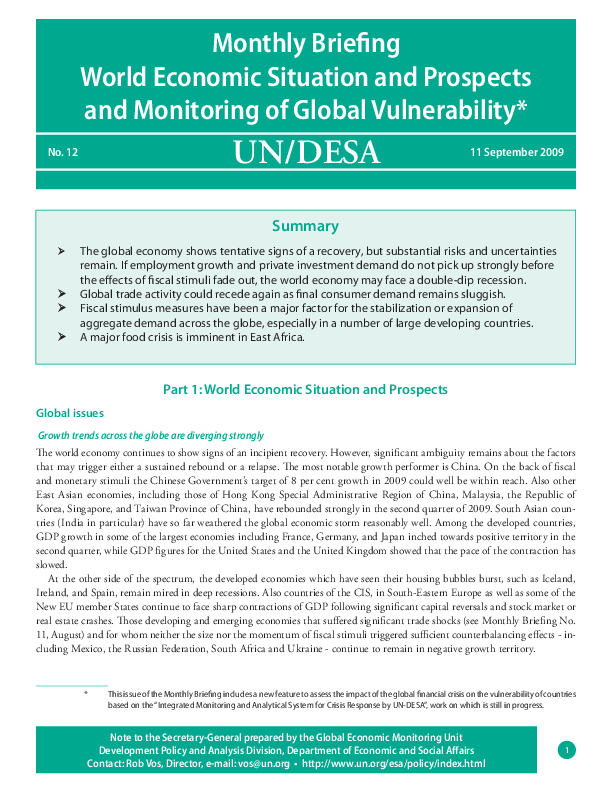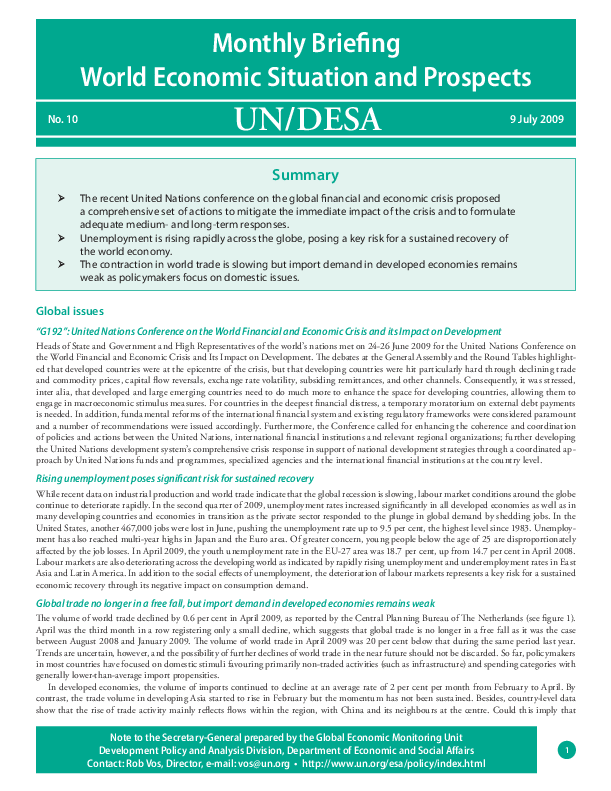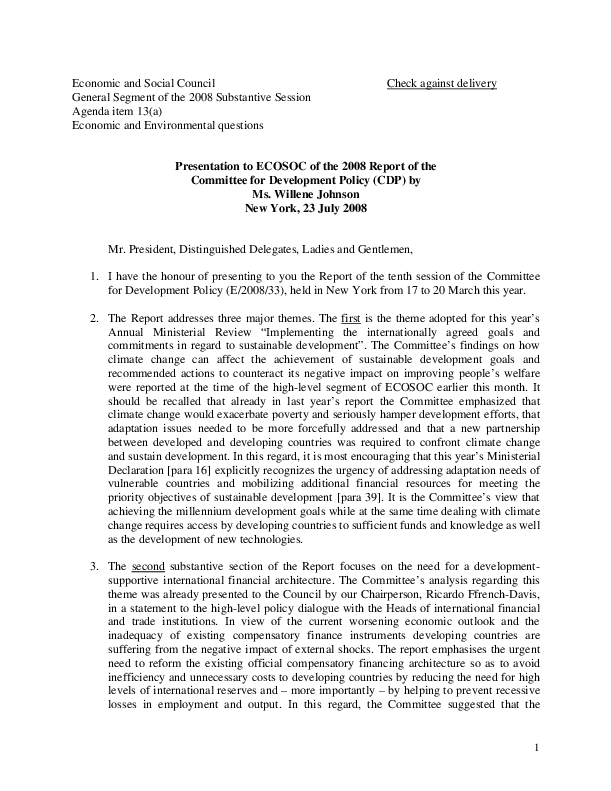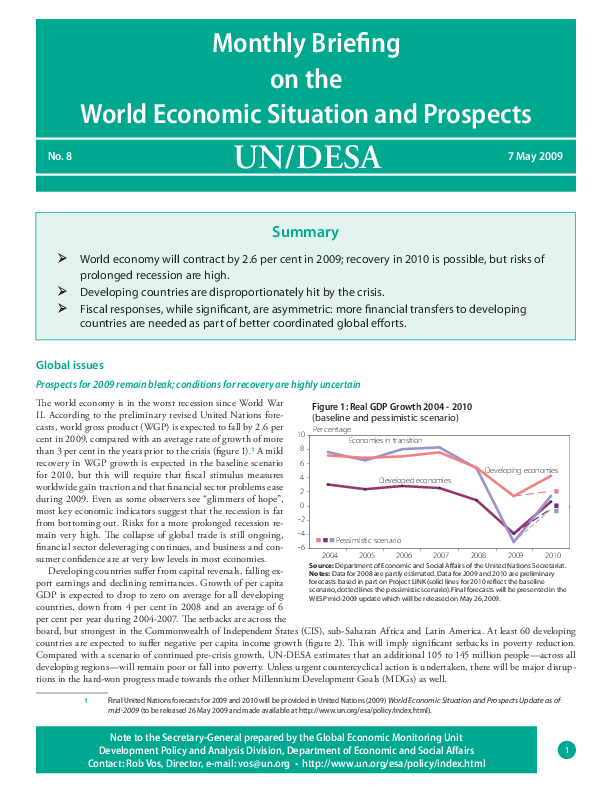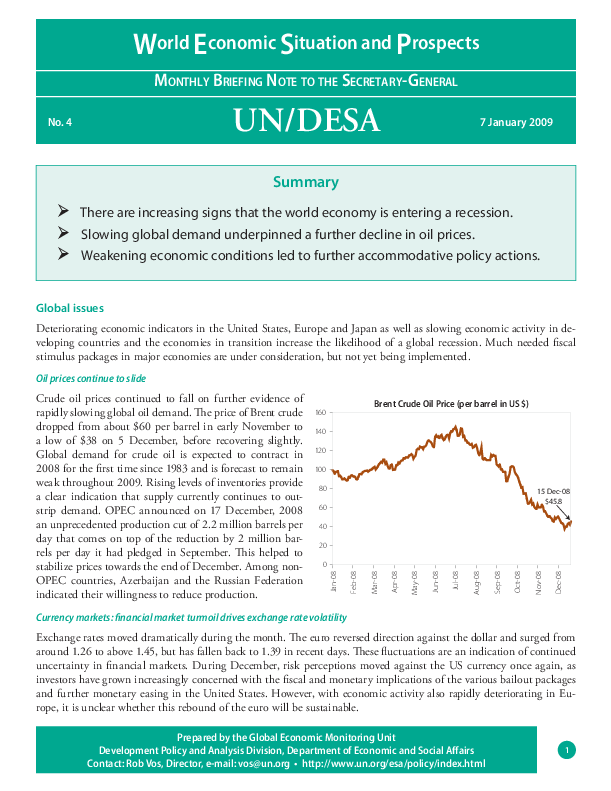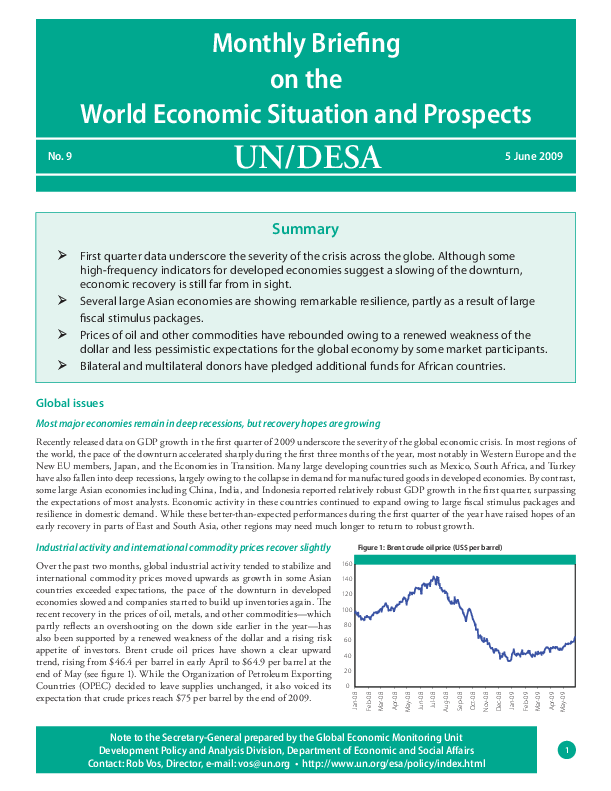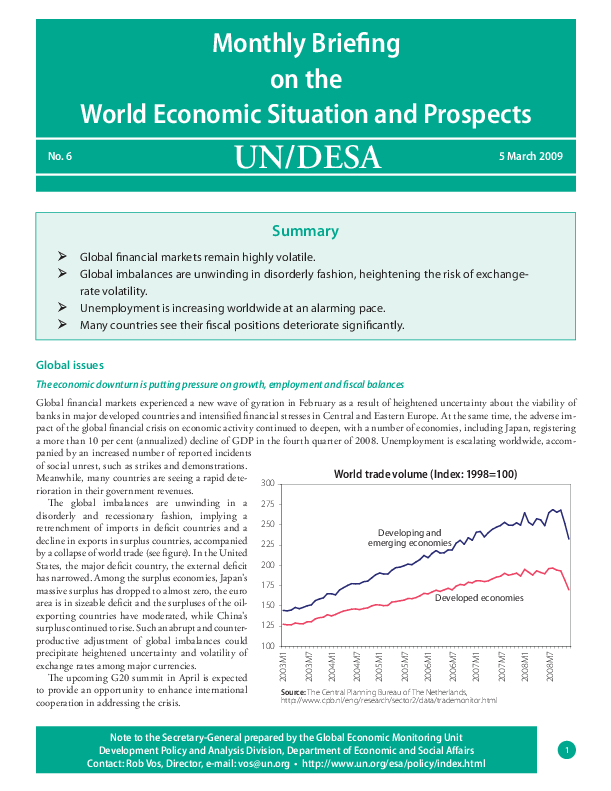Publications
Displaying 1 - 10 of 12
Summary: Global recovery continues, with an increasing number of countries reporting rises in output;?The recovery, however, is uneven across regions and economic and financial fragilities remain
Glob
Summary: According to preliminary UN estimates, the world economy will shrink by 2.2 per cent in 2009.
There are clear indications that recovery is on its way and global output may increase by 2.4 per
Summary: The global recovery remains fragile and requires sustained policy support, as agreed by G20?leaders at the Pittsburgh Summit.
The recovery in some Asian economies has lost some of its momentum
Summary:? The global economy shows tentative signs of a recovery, but substantial risks and uncertainties?remain. If employment growth and private investment demand do not pick up strongly before?the effects
Summary: The recent United Nations conference on the global financial and economic crisis proposed a comprehensive set of actions to mitigate the immediate impact of the crisis and to formulate adequate medium- an
Summary:? The global recession is moderating, with trade and industrial production stabilizing and financial markets partially improving
The prospects of a true global recovery are highly uncertain as d
Summary:? World economy will contract by 2.6 per cent in 2009; recovery in 2010 is possible, but risks of prolonged recession are high.
Developing countries are disproportionately hit by the crisis.
Summary: There are increasing signs that the world economy is entering a recession.
Slowing global demand underpinned a further decline in oil prices.
Weakening economic conditions led to furt
Summary: First quarter data underscore the severity of the crisis across the globe. Although some high-frequency indicators for developed economies suggest a slowing of the downturn, economic recovery is still far
Summary: Global financial markets remain highly volatile.
Global imbalances are unwinding in disorderly fashion, heightening the risk of exchange-rate volatility.
Unemployment is increasing worl
 Welcome to the United Nations
Welcome to the United Nations
